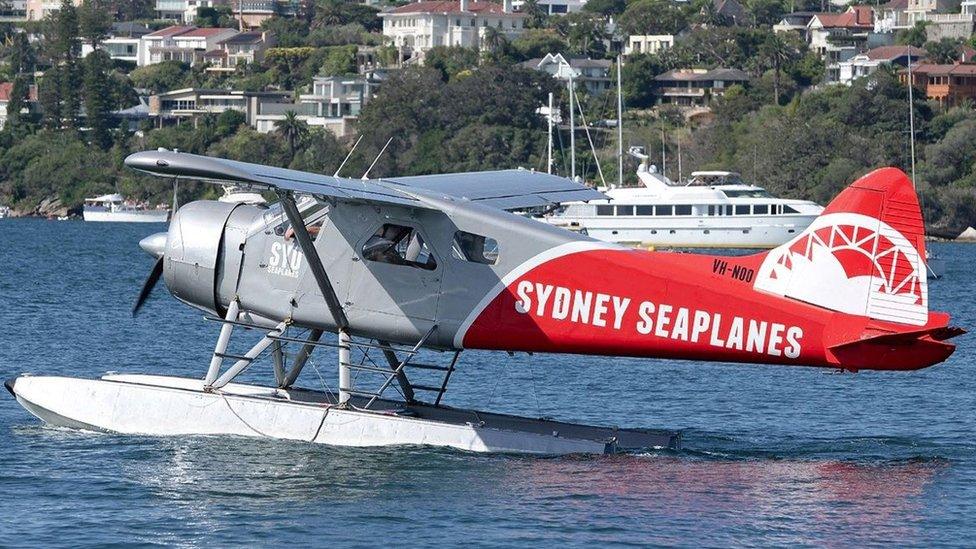Sydney seaplane crash: Sharp turn 'inexplicable', operator says
- Published

The crash involved a single-engine DHC-2 Beaver Seaplane
A seaplane was not following an authorised route when it plunged into a river north of Sydney, killing six people, the flight operator says.
Five members of a British family and a Canadian pilot died in the incident on 31 December. There were no survivors.
A preliminary report, released on Wednesday, did not draw any conclusions about why the plane had crashed.
But Sydney Seaplanes described events moments before the crash as "totally inexplicable".
The Australian Transport Safety Bureau (ATSB) report said the DHC-2 Beaver had made a steep right turn before diving nose-first into the Hawkesbury River at Jerusalem Bay, about 50km (30 miles) from the city.
"The key question arising from the report is why the plane crashed approximately half way down Jerusalem Bay... the plane simply should not have been where it was," said Sydney Seaplanes chief executive Aaron Shaw.
Among the victims was Richard Cousins, the chief executive of FTSE 100 catering company Compass Group.
Mr Cousins, 58, died alongside his 48-year-old fiancée, magazine editor Emma Bowden, her 11-year-old daughter Heather and his sons, Edward, 23, and William, 25, and pilot Gareth Morgan, 44.

The plane deviated from the expected flight path and crashed in Jerusalem Bay
The pilot had flown the authorised route "hundreds of times before", Mr Shaw said.
"A turn of this nature at low altitude by a pilot with Gareth's skills, experience and intimate knowledge of the location is totally inexplicable," he said.
The ATSB said it was investigating why Mr Morgan had flown in that direction.
"We don't have a preferred theory at this stage as to why he went off course," transport safety director Nat Nagy said.
Mr Nagy said investigators were exploring whether the sudden turn was "an attempt to turn around or whether it was a planned turn".

Victims (clockwise from top left) Richard Cousins, Emma Bowden, Will Cousins, Gareth Morgan, Heather Bowden, Ed Cousins
The pilot had more than 10,000 hours of flying experience - including about 9,000 hours on floatplanes. He had appeared to be in a "high standard of health", the report said.
Mr Morgan and the family from Tooting, in south-west London, had been flying back to Sydney from a waterfront restaurant near the crash site.
Cause remains unclear
Mr Nagy said he could not guarantee that the cause of the crash would be identified in the final report, due in a year.
"It is possible that we're not able to know exactly what happened in that cockpit," he said.
In its preliminary findings, investigators said there was no evidence of damage to the plane or any "flight control issues".
A survey of the wreckage found:
No evidence of a birdstrike or a collision with any objects
No evidence of pre-impact structural damage
The aircraft's flaps had been in a "climb" position at the time of the crash.
There was no voice or flight data recorder on board - neither were required by regulations for an aircraft of such size, the ATSB said.
The plane had last undergone maintenance in November. A new engine had also been installed then as part of a scheduled changeover, and subsequently tested, the report said.
Investigators said they would retain the engine, propeller and several aircraft components for further examination.